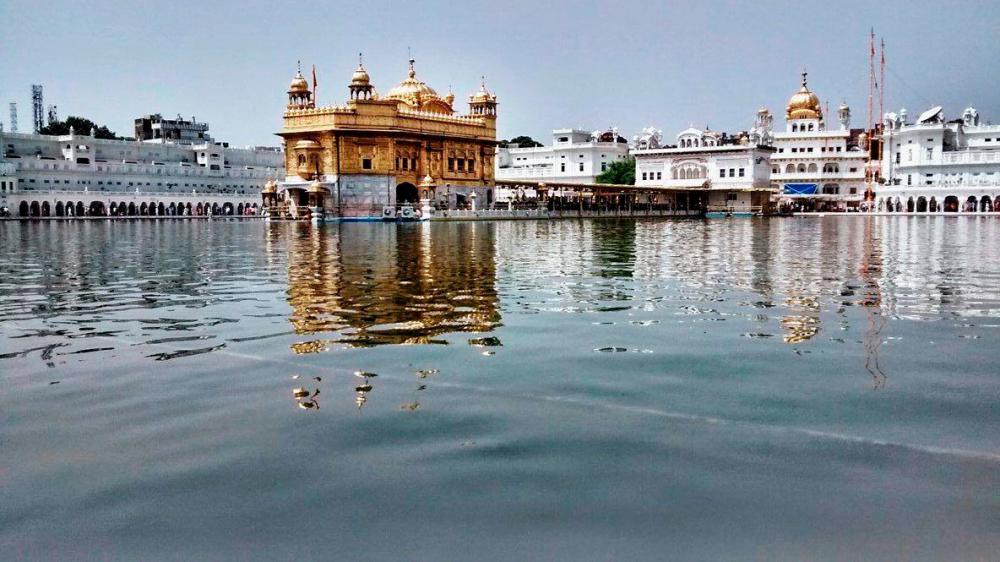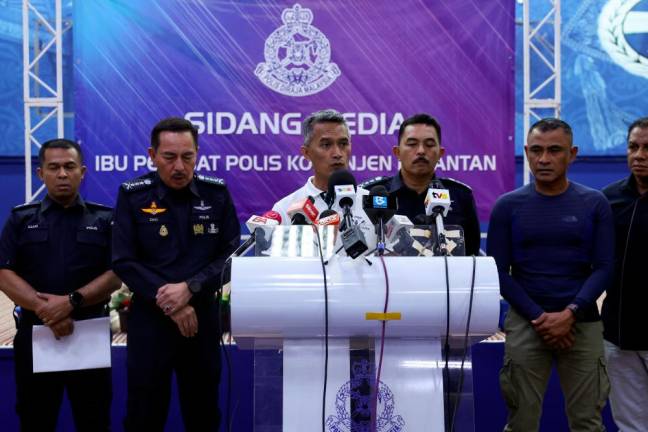NEW DELHI: The Harmandir Sahib, or the Golden Temple, is central to Amritsar city. It is also the Sikh religion's holiest shrine.
There are always long queues of pilgrims outside the temple. It stands in the middle of a large pool in which many devotees also bathe before entering the sanctum to pay obeisance.
The Golden Temple should be visited during the day as well as after sunset as the complex looks stunning in the glow of lights. Many visitors also go there in the evening for the ceremony in which the Sikh holy book Guru Granth Sahib is carried in a palanquin from the Harmandir Sahib gurdwara to the Akal Takht, the seat of Sikhism's supreme authority, which is located in the same complex. The sacred book is ceremonially brought back to the gurdwara before dawn.
The Akal Takht building was rebuilt after suffering severe damage during the Indian army’s 1984 “Operation Blue Star”, which was ordered by then Prime Minister Indira Gandhi to remove armed Sikh separatists holed up inside the complex.
Months later, Indira was assassinated by her Sikh bodyguards.
Along with the ceremonies, hymns and rituals at the Golden Temple, the scale of community service and charity, as exemplified by the “langar”, or community kitchen, is astonishing.
I ate food served in a big hall. Volunteers and staff cater to 60 to 70 per cent of some 100,000 people who visit the Golden Temple daily.
The numbers rise significantly on festivals, holidays, and special occasions. The sheer logistics of providing free meals, which are simple yet wholesome, to tens of thousands of people is mind-boggling. The meal I ate consisted of dal (lentil dish), chapati bread, puris, a vegetable dish, and kheer (a sweet pudding made of rice and milk). Stainless steel plates, bowls and spoons are handed to people when they enter the dining hall. When leaving the hall, you must hand them back at the collection and cleaning points. It's a great sight to watch hundreds of people seated cross-legged on the floor in neat rows. Financial contributions and voluntary labour are welcome. In fact, many visitors dutifully volunteer to wash dishes, and help with cooking and cleaning.
Jallianwala Bagh
Amritsar's eventful history is preserved in monuments and museums. The Jallianwala Bagh, located a short distance from the Golden Temple complex, is a must-see. A monument stands in this garden in memory of the hundreds of unarmed men, women and children who were massacred on April 13, 1919, by British Indian army troops commanded by Brigadier General Reginald Dyer. The wickedness with which the carnage was carried out has been recorded for posterity. The troops did not stop shooting until they ran out of bullets. Dyer had also brought two machine-guns mounted on armoured vehicles, but they could not get through the narrow entrance of the park.
The painful memories are preserved in the bullet marks on the red brick walls, in the “Martyr’s Well” into which many fell as they ran to escape bullets, and in the documents and audio commentaries at the gallery and museum.
Cuisine
The three best things about travelling to this city in northwestern India are cuisine, history, and hospitality.
In Amritsar, they do not go hammer and tongs at advertising the greatness of their cuisine. Delicious dishes are unpretentiously available widely. Unlike what passes for “vegetarian food” in most parts of India, the Amritsari variety is nutritious and indicative of a rich culinary heritage that stems from Punjab’s strong agricultural traditions.
What seems to have worked for Amritsari cuisine is that Punjabis are not fusion freaks and continue to follow traditional ways of cooking. They certainly know how to make the best use of ingredients produced in the region, whether dairy items or fresh vegetables.
I travelled to Amritsar by road from Delhi and along the way enjoyed Punjabi cuisine at roadside restaurants, known as “dhabas”. Some of these restaurants were modern complexes with very good tourist amenities.
Popular Punjabi dishes are “sarson da saag” (mustard leaves cooked with spices) and “makki di roti” (roti made of maize flour), “palak (spinach) paneer”, “dal makhani” (made of lentils and red kidney beans with plenty of butter and cream), and stuffed tandoori parathas. “Lassi”, a yoghurt drink similar to buttermilk that is widely consumed in the Indian subcontinent, goes well with Punjabi food.
Then, there’s the signature dish known simply as “Amritsari fish”. This appetizer of lightly battered and fried slices of fish is popular throughout northern India, but nothing compares to what I tried in Amritsar. Locals recommended the Makhan Fish and Chicken Corner restaurant, an institution in the city that has been in business for six decades. Makhan’s modernist décor made no statement about its famed past but the fried fish and curry more than lived up to the restaurant’s reputation.
Giani Tea Stall was a serendipitous find. Hankering for tea, I set out on an evening stroll and someone pointed me in Giani's direction. It’s a nondescript place but an iconic spot for those in the know. The person managing the shop asked me to come back in the morning to try the “kachori”, a fried snack made of fine wheat flour. “You will forget all the other places (where you’ve had kachoris),“ he said. Not an exaggeration, as I found out the next day.
There was an unusual rush of customers at Giani that day. The outlet opens around 5am and closes at 8pm. Its 64-year-old proprietor, Gurmeet Singh, told me the shop started 68 years ago. His grandfather ran a tea shop in Lahore for decades before the family moved to Indian Punjab after Partition in 1947. One wall is plastered with photographs of Giani with celebrities, mostly Punjab political figures, who came to taste Amritsar’s famous milk tea.
It's worth travelling to Amritsar only for the food, but I also wanted to experience some of its other attractions during my 48-hour stay. Top on the list was the Wagah border post, to watch the India-Pakistan flag-lowering ceremony, a unique spectacle that attracts thousands of tourists.
Hospitable atmosphere
The area around the Golden Temple is dotted with hotels, eateries, heritage sites and shops. Two of the city's best-known restaurants – Bharawan Da Dhaba and Brothers Dhaba – are near the Town Hall, within walking distance from the Jallianwala Bagh. The pedestrian-only heritage street leading to the Golden Temple complex is full of shops selling Sikh religious items, souvenirs, shoes, and clothes. You can experience the hustle and bustle during daytime or enjoy calmer evenings in the area. Narrower and noisier lanes are worth exploring, too, as they offer a less curated tourist experience. -Bernama













